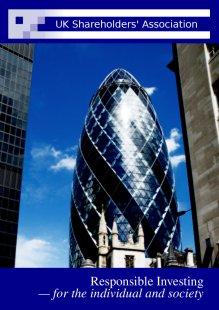Ten Years of Big Swings
In the last decade the FTSE twice as passed 6,500 only to plunge to 3,500 and now, Oct 8th 2010 is about 5650, but when inflation is taken into account the FTSE 100 at 5650 is equivalent 3750. With no capital gains and all income after tax reinvested £10,000 in 2000 would have held in real terms, and maybe a bit more.
This sobering fact focused members interest in what Denis and Nick had to say about:
- How to pick winners
- How to avoid losers
It soon emerged from their presentation that timing of buy:sell decisions was vital to outperforming the market but the issue has to be how to spot which way the market is going or better still anticipate where it is going. In this they suggest that charting trends was a central. In the long term they suggested the market primary trend is 4/5year cycle between highs and lows. Although the last cycle was nearer 9 years from the last peak to the '09 trough was less than two years. However once a trend has been established it has within it a series of short term trends, waves around the average. Thus they argued that Charting moving averages against the actual has a great value because the cross over points of averages based on differing periods can give vital indications of market sentiment. The potential values of Golden Crosses and Death Crosses was explored in depth as was exploratory discussions and demonstrations of Fibonacci.
Whilst it was evident from the charts of guest speakers presented that timing was critical to success many members were inclined to consider passive investment, which did not rely upon timing but upon the quality of the stocks chosen. Even so individual buy sell signals may have advantages for the private investor who does not have time to analysis every shift in averages. The argument is that the market is not perfect and passive investors, by accepting consensus risk and returns, limited their means to do well by not heeding chart signal:
- generally
- specifically in relation to mis-priced individual and sector securities and groups
Using charts, it was suggested, will help investors not missed chances to sell high and buy back low, especially within the short-term trends.
Following an interesting and informative discussion on the benefits and draw-backs of charting Kevin Boland then reviewed the more conventional approach to selecting individual shares but underlying this second presentation was the need to get the timing right. The FTSE, if was argued can only be beaten in 3 ways:
- Using charts to help you not to be in decline markets and to invest in rising markets
- Using charts to identify Plcs which are mis-priced because the market is not perfect
- Having a clear set of individual criteria for measuring individual share performance and so determine buy and sell decisions.
The latter criteria should include;
- Dividend Yield
- PE
- Net Asset Value
- Dividend Cover
- PEG
- Gearing
- Cashflow
- Pension Fund Liability:Asset Ratio
A consideration of the current price and future income potential in terms of discounted cash flow. This latter lead to an interesting debate as to how one defined Glamour and Value stock; the later first defined by Graham and Dodd (1934) and much favoured by Warren Buffett. Mention of the latter caused one member present to point out that investors in Hathaway shares had done several hundred times better than those who had entrusted their money to, and paid Hathaway to manage it for them.
The session ran out of time, such was the level of debate, but not before Kevin was able to introduce members of the Piotroski F_Score which aroused much interest in identifying, using a simple positive (1) and negative (0) assessment for comparing latest results with previous year.
Company Profitability
Return on Assets positive = 1
Cash Flow return on Assets improving = 1
Change of rate of return on Assets improving = 1
Quality of Earnings improving = 1 (cash flow to net assest)
Funding
Change in Gearing falling = 1
Change in Working Capital better use = 1
Change in number of Shares issued same or less = 1
Efficiency
Change in gross margin better = 1
Change in asset turnover better = 1
Applied to the FTSE 350 Kevin found that it reduced the firms he needed to consider, ie with scores of 5 or better out of 9 to 56.
Successful investing is about finding charting and other techniques which enable to reduce the hugh number of shares which determine the Market indices to a short list which have the potential to outperform the average, and then selecting from that shorter list, using additional market information and other criteria which allows you to consistently outperform.
Peter T Wilson 10.10.10
*Report based upon a Redmayne Bentley presentation by Denis Oppong, Nicks Wills and Kevin Boland at the Didmarton seminar, October 6th. 2010
DISCLAIMERS

